Listen to the interview with Women’s Telehealth President Tanya Mack as she was a guest on the podcast “Really Know Your Customer”. Click the link below to hear how telemedicine has taken the medical field by storm.
Listen to the interview with Women’s Telehealth President Tanya Mack as she was a guest on the podcast “Really Know Your Customer”. Click the link below to hear how telemedicine has taken the medical field by storm.
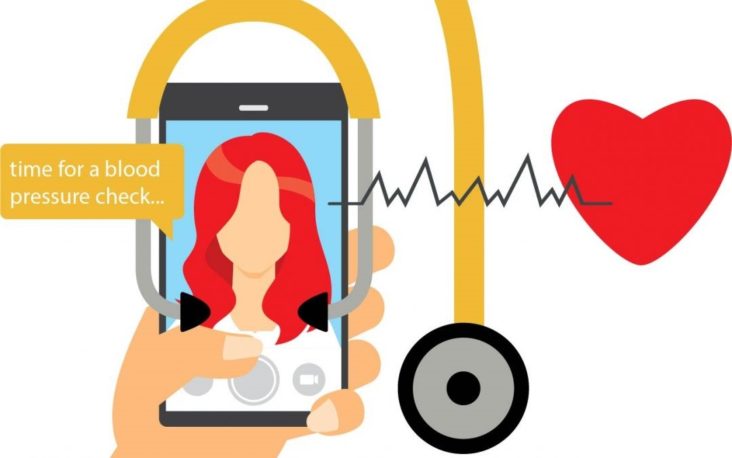
By Tanya Mack, Women’s Telehealth
On March 11th, the World Health Organization declared COVID-19 a worldwide pandemic. As our understanding of COVID-19 expands and our social distancing and separation requirements extend, the need for safe access to care for all, and the protection of pregnant women has become critical. Although we do not yet know if pregnant women have an increased chance of getting sick from COVID-19 compared to the general public, we do know there are changes in their bodies that may increase the risk of infection. We are now seeing indiscriminate and sustained spread across patients in all three trimesters. Within the past month, telehealth has risen to the forefront worldwide as a means to provide quick and safe access to medical care – and the pregnant patient and their obstetric providers are no exception.
Telehealth Enters OB Practice in a Widespread Way
Prior to the COVID-19 pandemic, the use of telehealth was minimal in obstetric practice in the US. Despite its growth in other healthcare areas, few healthcare facilities or providers were set up to provide OB telehealth services. However, in the short span of 4-6 weeks, this has changed dramatically. We have seen ACOG and the Society for Maternal Fetal Medicine (SMFM), hospitals and OB practices quickly respond with broad adoption of telehealth as a means to protect pregnant patients from viral exposure, OB clinical protocols adjusted for telehealth and “pods” of providers during delivery admissions to avoid cross-contamination. As we are learning together, telehealth use can be crucial in meeting healthcare needs during disaster relief.
How Telehealth Works in General and in Obstetrics
Telehealth can be used in many settings such as hospitals, outpatient clinics, doctor’s offices and in patients’ individual homes. Telehealth visits can occur by using satellite, cellular or broadband transmission. Prior to COVID-19, in the US, broadband (internet) was the most common method of transmission. However, cellular transmission is quickly providing access, as it is the most available means for the patient to connect from home via their Smartphone. Clinical standards follow the same guidelines and flow as face-to-face visits. Generally, the connection requirements include: a camera, a microphone and either a cellular or internet connection between the parties.
OB Telehealth visits can occur in the following ways:
Regulatory and Reimbursement Changes in Telehealth During COVID-19 Crisis
Reacting to and being flexible with the current situation, the federal government has greatly relaxed prior barriers to telehealth in recent weeks. Although few pregnant patients have Medicare as a payor, the Centers for Medicare and Medicaid Services (CMS) has set standards that many state Medicaid and commercial carriers are following as well. Some of these temporarily “relaxed” guidelines for telehealth use and payment during this crisis are:
For reimbursement, although CMS and Medicare have lifted restrictions for payment nationwide and temporarily, each state controls their Medicaid coverage and each commercial healthcare payer determines their telehealth coverage. Patients are encouraged to follow and check with their own carrier and state, but an overwhelming majority are covering telehealth during this public health emergency. In general, although the use of telehealth and reimbursement for it are changing daily, preventing the spread of COVID-19 in pregnant patients remains the #1 priority in obstetrics.
Obstetric Protocol Adjustments for Low and High-Risk OB Patients Using Telehealth
Obstetric professional organizations such as delivering hospitals, ACOG and SMFM are adapting clinical guidelines for telehealth. The idea is to have OB patients come in for critical antenatal appointments such as the 11-13 weeks dating scan and labs, 20-week anatomy ultrasound, and the 26-18 week GTT testing and end of pregnancy visits. Telehealth antenatal visits can be used for <11 weeks initial assessment visits, blood pressure checks for pre-eclampsia and glucose monitoring for gestational diabetes, and kick counts/telehealth follow-up versus in-person nonstress tests (NSTs), etc.
As there is no vaccine for COVID-19 yet, limiting risk for pregnant patients during this pandemic remains a priority. Worldwide organizations are sharing COVID-19 pregnancy information at a rate we’ve never seen before, to ascertain how the virus affects mom and the fetus, whether vertical transmission occurs between mother and fetus, what treatments are effective and more. In the interim, the benefits of using telemedicine in obstetrics are clear. Telemedicine provides easier access to specialty care, is consistent with the social distancing policies, is often cheaper than an in-person visit, and decreases unnecessary travel.
Prior to the COVID-19 pandemic, Women’s Telehealth provided over 34,000 high-risk OB visits 100% by telehealth. As providers and patients grow accustomed to using this modality in obstetrics, many for the first time, Women’s Telehealth is available to help. Contact Tanya Mack, Women’s Telehealth, 404-478-3017 or visit www.womenstelehealth.com.
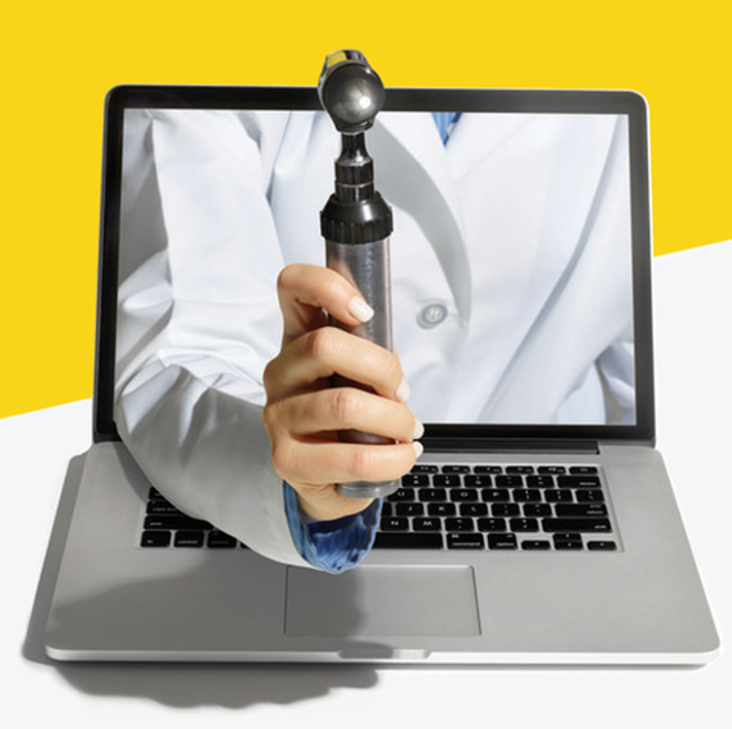
Seeing a doctor digitally is on the rise, but should you?
Getting to the nearest high-risk pregnancy specialist was an ordeal for Tara Perez, a 35-year-old with type 1 diabetes. Tara lives in Cartersville, GA, a small town that can be up to three hours from Atlanta during rush hour. Because of her condition, it was critical for her to see this doctor regularly.
Fortunately, Tara’s local ob/gyn teamed with an Atlanta telehealth company, so every few weeks when she went for her checkup, she was also able to video-chat with maternal-fetal doctor Anne Patterson, M.D. Skipping the long-distance drive meant that the appointments didn’t take much time away from Tara’s home fragrance consulting business. Most important, it allowed her to have top-notch medical care.
The ability to offer specialty medical care outside of a big city is a key reason that telehealth (sometimes called telemedicine) has taken off in recent years. What’s fueling the surge: increased access to health care and improvements in technology, such as a secure flow of information. These allow health care providers to do things they couldn’t 25 years ago, like get near-instantaneous results for ultrasounds, EKGs, and other tests.
What a virtual appointment is like
Last year, some 7 million Americans accessed a doctor via a screen. The number of these live video appointments grew sixfold from 2015 to 2018, according to Rock Health, a fund that invests in health technology companies, and is expected to keep rising. At the same time, stores like Walgreens, Rite Aid, and CVS are starting to offer urgent-care video link-ups in some locations.
While insurance reimbursements for remote treatment vary from state to state and plan to plan, some 96% of large companies offer a telehealth benefit to employees.
Patients who have established relationships with doctors or therapists may prefer to download an app to talk to them rather than fight for an appointment. For other patients, the key is saving time—and not missing out on earnings to head to an in-office appointment.
Beyond convenience, research shows that telehealth can be as effective as in-person doctor visits. When 50 multiple sclerosis patients in a University of California study saw a new-to-them neurologist via video, all said their appointment satisfied their goals (e.g., understanding test results or adjusting meds), and three avoided a trip to the ER because the doctor was able to assess and treat them remotely.
When technology isn’t enough
Of course, there are situations in which telehealth is not appropriate. If you’re having an asthma attack or a cardiac emergency, for example, you should head to the ER, and some less dire conditions are also better diagnosed in person. In some remote situations, both physicians and patients may find the distance hard to bridge. “If someone we’ve been helping loses a pregnancy, the doctor can’t reach through the camera to give them a hug,” Mack says.
Is telehealth the future?
With access to the technology and a little practice, though, doctors say they can usually give their patients what they need. Instead of bedside manner, “we call it ‘webside manner,’” says David Mishkin, M.D., medical director of Baptist Health’s telemedicine program. “Doctors are beginning to see that this is part of the future for improving access and expanding the delivery of health care,” Dr. Mishkin says. If it offers patients quality care at an affordable price, it’s a future we can all embrace.
Read full Article: https://www.prevention.com/health/a29490042/what-is-telehealth/
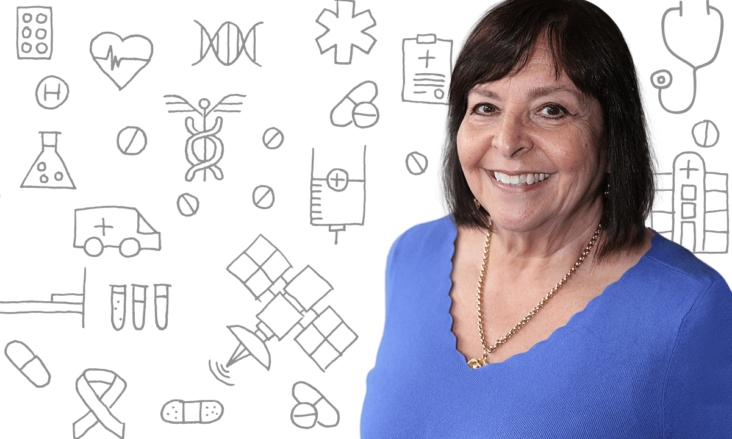
Telemedicine — the delivery of healthcare via telecommunication technologies — has been around for decades. But it took an engineer to get it just right.
“We were doing telemedicine at NASA in the early 70’s, but it was completely ‘unsophisticated’ by current standards,” says Georgia Tach aerospace engineering alumna C. Anne Patterson, a board-certified OBGYN and CEO of the Sandy Springs-based Women’s Telehealth.
“We used a satellite to provide information about birth control that people in India could watch in between regular television programing,” remembers Patterson. “I was a propulsion engineer working on that satellite. Later, the satellite was re-purposed to send medical information to physicians in very remote areas of the Rocky Mountains. And that was the extent of our ‘telemedicine’ in the 70s.”
Four decades later, the telemedicine that Patterson now practices is much more than a medically-themed infomercial beamed down from a satellite. It is a systematic use of several technologies (including satellites), all with the goal of delivering personalized medical care directly to patients in remote areas. Telemedicine is also removing one of the largest barriers to health care delivery in the rural South: a chronic shortage of specialized medical practitioners.
“We’ve been able to set up clinics in seven southern states,” says Patterson. “We’ve reached more than 30,000 mostly low-income women — women who would not have access to maternal-fetal health. This is what modern telemedicine is capable of doing.”
Finding her Specialty
Patterson chose her medical specialty — maternal-fetal medicine — in part because it plays such a critical role in Georgia, which has some of the highest rates in the United States for maternal mortality and pre-term delivery, particularly among women of color.
“We conducted a study in Albany Georgia — an area that had preterm birth rates of 18 percent for African-American women, and 16 percent for Hispanic women,” says Patterson. “Those rates were the highest in the state. While it was a tough region to choose, everyone was receptive to trying something new to make a difference.” After bringing telemedicine into the area for 18 months, pre-term birth rates dropped to 8 percent and 6 percent respectively, which is lower than the national average. To date, the rates remain at this level or lower.
Telemedicine is uniquely suited to address the problems faced by the rural poor, Patterson points out. It does not involve high transportation costs, travel time, childcare, or Medicaid. With all of these barriers eliminated, patients are more likely to initiate and maintain contact with the medical system earlier in their pregnancies. Women’s Telehealth helps these high-risk patients to manage chronic health problems — like diabetes and hypertension — that could threaten their pregnancies.
In a typical consultation with Patterson, the conversation rarely ends when doctor and patient have checked off all the obvious medical issues, however. Before the video shuts down, Patterson leans into a more motherly consult with her patients, who have likewise relaxed their once-tense postures. At these moments, it’s a little easier to understand why Patterson is still seeing patients long past the point when most physicians would have retired.
Complete article go to: https://coe.gatech.edu/news/2019/11/engineer-inside-physician

An 18 year old patient presented in a rural area to the local OB physician when she was 16 weeks pregnant. Her OB history showed she had been diagnosed with Type I Diabetes at age 5. She had been seeing a local endocrinologist but was told he would not follow her and manage her insulin during pregnancy.
The close diabetic monitoring required throughout the pregnancy would need to be provided by a Maternal-Fetal Specialist. Because the closest one was approximately 1 ½ hours from the patient’s home, she was referred to Women’s Telehealth by her local OB physician for co-management. Women’s Telehealth provided MFM care through telemedicine visits.
Of additional concern was that the patient was noted to be non-compliant in her insulin regime and diabetic care.
. . . . . . . . . . . . . . . . . . . . . . . . . . . . . . . . . . . . . . . . . . . . . . . . . . . . . . . . . . . . . . . . . . . . . . .
The prevalence of diabetes in pregnancy in the U.S. is increasing. Pre-existing, Type I diabetes confers an increased and more significant risk to both mom and baby than gestational diabetes. Tight blood sugar control is critically important at all stages of pregnancy. Uncontrolled diabetes in pregnancy can lead to such complications as fetal anomalies, pre-eclampsia, fetal demise, macrosomia, neonatal hypoglycemia and spontaneous abortion.
To learn more, visit: https://www.cdc.gov/pregnancy/diabetes-types.html
. . . . . . . . . . . . . . . . . . . . . . . . . . . . . . . . . . . . . . . . . . . . . . . . . . . . . . . . . . . . . . . . . . . . . . .
Our goal in sharing patient case stories is to show the role and possibilities Women’s Telehealth plays in accessing high risk situations and to help turn patient and OB provider concern into the best possible care plans and outcomes for mom’s and their babies. For more information, call our office at: 404.478.3017
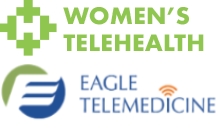
Women’s Telehealth and Eagle Telemedicine are working together to bring scarce, high risk OB services to more communities across the country!
Eagle Telemedicine is a premier telemedicine organization with a national network that brings a wide variety of healthcare providers to acute and critical access hospitals and health organizations. They provide night coverage and specialty care as well as fill staffing gaps, all exclusively by telemedicine. Eagle Telemedicine provides over 20,000 telemedicine patient encounters annually. Women’s Telehealth has completed over 31,000 maternal fetal medicine patient encounters/studies.
“This alliance will expand the capabilities of both companies,” said Women’s Telehealth President, Tanya Mack. “Eagle Telemedicine now adds maternal-fetal medicine to their service line and Women’s Telehealth gains expanded geographic coverage.” Builders and shapers in their respective areas of the telemedicine industry, the companies share mutual goals of bringing much needed specialty care to where it is needed and serving the underserved in a sustainable, cost effective manner. The companies’ combined strengths will allow high risk moms to keep their care local and allow hospitals and healthcare organizations to retain their patients and provide scarce specialty care.
For more information visit:
http://: https://www.eagletelemedicine.com/telemedicine-services/telespecialty-services/telematernal-fetal-services/
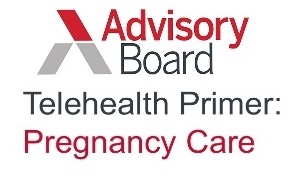
Virtual pregnancy care spans from prenatal to postpartum care. It incorporates a variety of telehealth modalities including audiovisual visits, remote patient monitoring and “live” and asynchronous store and forward imaging.
The Advisory Board is the best practice firm helping healthcare organizations worldwide improve their performance using a combination of research, technology and consulting. They have 12 offices on 3 continents and publish to over 9,000 healthcare organization outlets.
Recently, the Advisory Board published the piece, “Telehealth Primer: Pregnancy Care.” The publication features four innovative healthcare organizations using telehealth tools to deliver different aspects of pregnancy care and their business cases and results.
Women’s Telehealth is pleased to be featured in the primer for our work in providing maternal-fetal medicine services, delivered 100% via telemedicine, to help decrease preterm labor and improve access to maternal-fetal medicine providers.
The Mayo Clinic’s OB Nest program and the University of Utah were also featured in the Primer for their work in delivering antepartum visits virtually vs. in-person visits, to improve patient satisfaction with the same clinical outcomes.
The Primer also featured the University of Pennsylvania for delivering postpartum visits via remote patient monitoring to ease post-delivery care and outcomes for new moms.
For a copy of this informative primer, visit: https://www.advisory.com/research/service-line-strategy-advisor/resources/2018/telehealth-primer-pregnancy-care
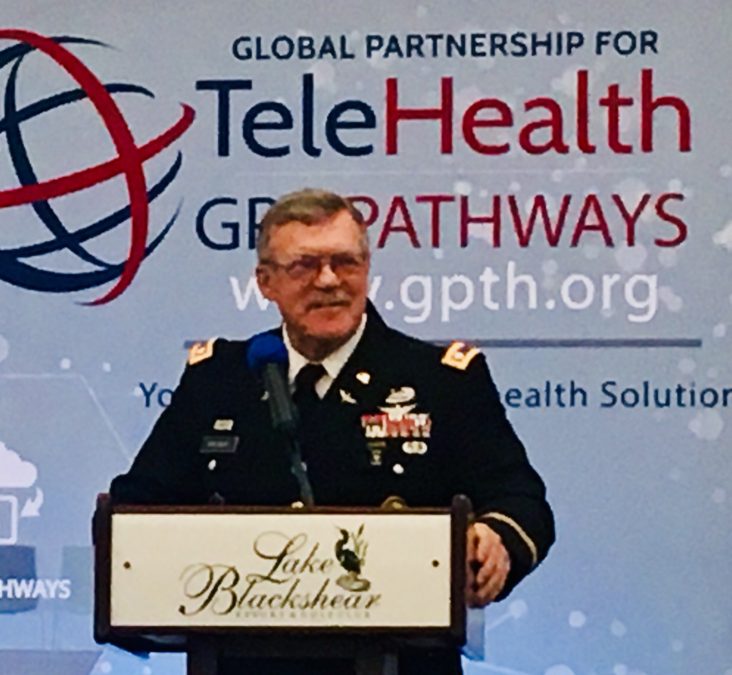
On a spring day at Lake Blackshear at the Global Partnership for Telehealth annual GA conference, I heard one of the most inspirational keynote speeches I’ve ever heard about my telehealth profession. Dressed in full uniform, LTC(R) Daniel R. Brewer delivered the moving address, “A Soldier’s Perspective on Healthcare.” Along with a series of impactful pictures, Brewer’s presentation about the intersection of telehealth and war unfolded. The audience was spellbound.
LTC Brewer served several tours in Afghanistan and Iraq and had the opportunity to work with Generals David H. Petraeus and James N. Mattis. Brewer solved environmental problems we often see or associate with war, when we are viewing from afar. However, burn pits, hazardous waste, medical waste, oil spills and improper water disposals were issues that needed his solutions. But then he was injured.
LTC Brewer clearly outlined for us from his first-hand perspective, how once a soldier is injured, the task at hand quickly focuses on staying alive. Access to immediate healthcare is essential and that’s what telehealth provides. Healthcare access = ALIVE. LTC Brewer pointed out that he and many other soldiers may not be here today if not for the remote care provided by the Department of Veterans Affairs.
Telehealth is one of the rare success stories of war. The U.S. military has been a leader in telemedicine for decades, employing technologies ranging from pictures from the battlefield, to direct emergency treatment, to mental telehealth visits for PTSD once vets are home. Telehealth at any point, delivered to an injured soldier, improves healthcare accessibility.
The military is also using new technologies, including EEG devices, to measure concussion effects and the extent of brain injuries. They lead in telemedicine in so many ways and the U.S. VA system is one of the world leaders in the use, scope and scalability of telehealth during deployment, active duty and once our soldiers are home.
At the end of his speech, LTC Brewer challenged the audience to be strong telehealth “enablers,” in the positive sense of helping make things happen! He was the biggest enabler of all of us that day and we were proud of acknowledge him with a standing ovation.
In our business, we save high risk moms’ and babies’ lives often via telehealth. But from the audience that day, I had the opportunity to see how telehealth also prevents death and injury from a different perspective. It made me proud to be in the business of telehealth and so proud of our U.S. military taking care of their own, when the system is often criticized.
As we celebrate our freedom this week, Women’s Telehealth once again salutes LTC Brewer for sharing his amazing story!
~Tanya Mack, President
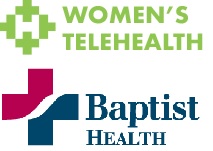
Baptist Medical Center East in Montgomery, AL, is seeing the positive results of keeping high risk obstetric patients local after partnering with Women’s Telehealth to add maternal-fetal services via telemedicine. The hospital opened their new perinatal center in late 2018 and became the first MFM telehealth operation in the state of Alabama. Prior to opening, high risk OB patients often had to travel over 2 hour to either Birmingham or South Alabama for MFM consultation and care. In their first several months in operation, hundreds of high risk OB patients have been cared for in their home community of Montgomery.
“This partnership has allowed Women’s Telehealth to expand services into the State of Alabama,” said Tanya Mack, President of Women’s Telehealth. “It has also helped payers in Alabama to see the value that adding access to high risk OB services to telehealth brings to rural Alabama by expanding their coverage.”
Jeff G. Rains, CEO of Baptist Medical Center East reports that, “Partnering with Women’s Telehealth has allowed us to fill our maternal-fetal medicine gap while improving and advancing our obstetric service line. Since the beginning of this partnership, we have seen a significant growth in patient encounters, outcomes and satisfaction. We are proud to be able to offer this service locally and proud to be partners with Women’s Telehealth.”
For more information about Baptist Medical Center East visit: https://www.baptistfirst.org/locations/baptist-medical-center-east

Women’s Telehealth is pleased to announce the partnership with The Addis Clinic, to provide volunteer obstetric and maternal-fetal medical expertise to healthcare workers in other countries lacking high risk OB physicians. Michelle Turner, Executive Director, and Meghan Moretti, Clinical Operations Manager, The Addis Clinic, and Tanya Mack, President of Women’s Telehealth, met at the Global Partnership for Telehealth’s Conference in Georgia this past spring. They later connected at the national ATA meeting and decided to combine resources to increase access to high risk OB care through Addis Clinic’s global partner clinics and telemedicine.
The Addis Clinic is a non-profit organization that connects volunteer physicians with local organizations to provide health care to vulnerable and underserved populations around the world. The primarily locations served include sub-Saharan Africa, the Caribbean and Central America. It is estimated that there is a shortage of 4 million healthcare workers globally.
The Addis Clinic partners with medical experts willing to donate their expertise to help train frontline clinic healthcare workers thousands of miles away using an innovative healthcare communications platform.
Thus far, Women’s Telehealth has been able to remotely assist high risk OB patients and healthcare workers in Kenya for such obstetric problems as: stroke at 20 weeks gestation, uncontrolled diabetes mellitus and malaria infections in pregnant women.
For more information about The Addis Clinic visit: https://www.addisclinic.org/
Photo: Michelle Turner, Executive Director, The Addis Clinic; Tanya Mack, President, Women’s Telehealth